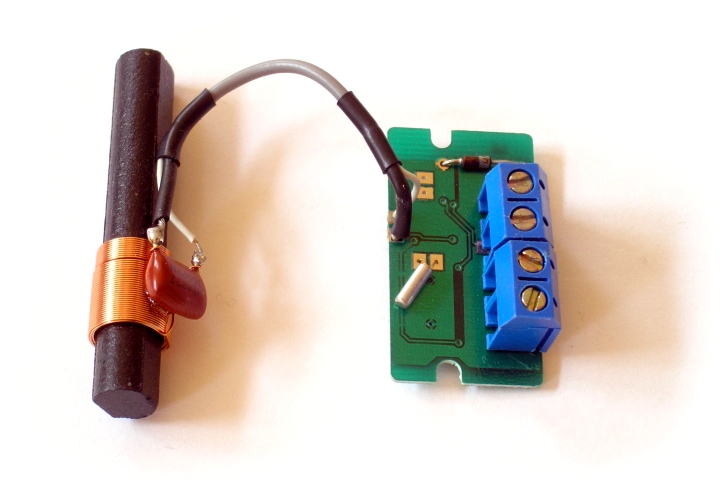162 KHz radio resonnator
I'd like to make an antenna for the 162 KHz frequency. Do you have some tips to design it ? I have never done that before.
I have a ferrite rod 10mm diameter 100mm long. Is it better to maximise the inductive part or the coupled capacitor ?
Thank you
Bob
You can increase signal proportional to
1) wire length of antenna
2) Q of resonator
3) high gain , low noise preamp
4) matched filter to signal bandwidth.
Note in example below, High Q requires low leakage Plastic film Cap. There are also ceramic resonators used with whip antenna

https://en.wikipedia.org/wiki/Low_frequency#Antennas
http://www.arrl.org/lf-low-frequency
https://en.wikipedia.org/wiki/2200-m...chnical_issues
Thank you this picture is exactly what I want to perform.
But there are parameters that I have to choose like length, number of turn and diameter of the copper wire.
After that my idea is to measure my coil with L meter, then choose the appropriate C corresponding for 162 KHz.
Maybe fixed value capacitor + adjustable capacitor in parallel to tune accurately the receiver.
200mm ferrite rod would be better. You need a coil with Q=150 approx. Number of turns about 150-200. Best wire is HF litz.
http://www.roehrentechnik.de/html/hf-litzen.html here you can find all you need.
The Gain or Q of a parallel tank circuit with high impedance load, R, is as follows;
Q=R√(C/L)
So make L small but long as you can to pickup μV/m signals such as 1m vs 10cm.
But keep L small and use larger C , so that stray capacitance does not detune antenna.
Use Plastic film cap with 100M resistance and front end FET with similar high impedance. Lower Coil impedance will shunt ESD and lighting noise while raising Q.
At resonance antenna impedance=R only but off frequency drops quickly to provide filter gain.
Other methods use impedance gain by series to parallel auto transformer for N factor improvement.
high inductance // tank circuits are used for gain when driven only by current sources or H field coupling, so it depends what on if you are detecting near H fields or far E fields.
for near H fields a large loop is better.
for far E fields a long coil is better.
Open field LF antenna detects E field high is voltage at free space impedance.
Try to choose cap well below 1000 pF for selecting L so that series R of inductor is negligible or high Q inductor ZL/Rs
thats my 2 cents
more..
e.g. 470pF//2.1mH @160kHz =~2.1kOhm so 1MOhm R load might achieve Q=500 if coil Q is higher meaning <2 Ohm Rs.
higher L and smaller C is possible if winding capacitance is lower, but keep in mind antenna is like a transmission impedance transformer between free space and high Z input preamp, so ideal impedance is stepup tuned transformer , otherwise ZL(f)= RMS Z(f) or root of {free space source Z^2 and high R load^2}
Thank you ! I will try to do something and share my progress
